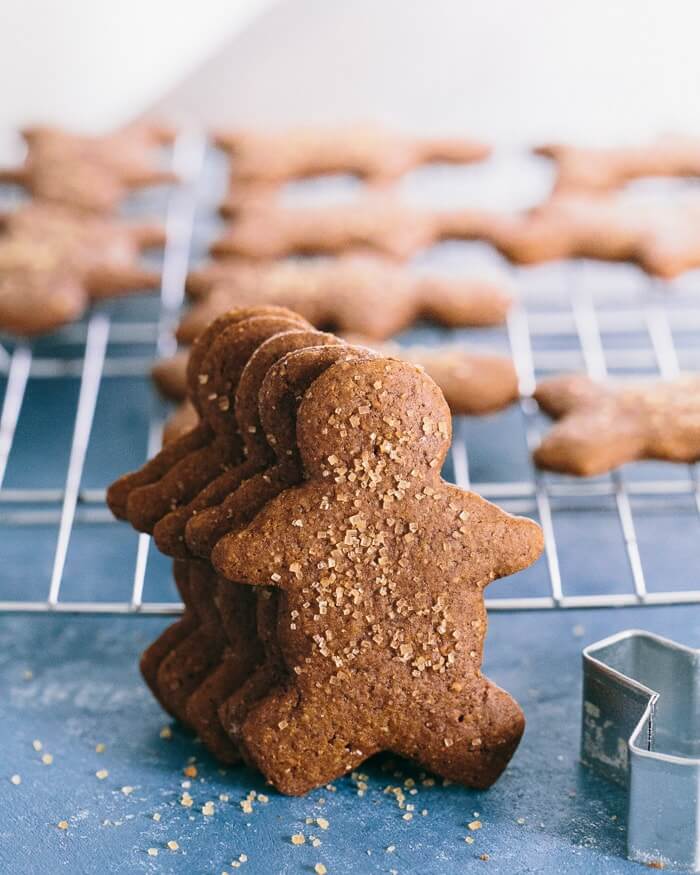So what are healthy cookies?
Honestly, we wish there were a better word than healthy. Because cookies in themselves are not a health food! Alex and I like to use a few strategies for making healthy– that is, healthier cookie recipes! Here’s our approach:
- Use nutrient dense real food ingredients. We love incorporating nutrient dense ingredients to counteract the typical loads of butter, white flour and refined sugar. Almond butter, peanut butter, oats, almond flour, and maple syrup all make appearances in our best Christmas cookie recipes.
- Amp the flavor. We use spices and natural flavors to bring in big flavor, instead of relying just on sugar. For example, there are abundant chai spices in our snowball cookies, or lots of gingerbread spices and molasses in our soft gingerbread cookies.
- Use just enough sugar. For every Christmas cookie recipe we make, we adjust the sugar content so that it tastes amazing: not too sweet, but just right.
Tips for making “healthier” Christmas cookies
- Cookies do need fat, typically butter, to create that cookie-like texture. Omitting or replacing all the fat (with a substitute like apple sauce) usually lends for a cake-like texture, which is not altogether satisfying for a cookie. A good alternative is almond butter, which we’ve used in these gingerbread men: it’s a natural fat with plenty of nutrients and protein. We combined it with a small amount of butter, as well as a bit of applesauce to keep the cookies soft and moist, but not too much to become cake-y.
- Cookies do need sugar, either refined or natural. We love cooking with natural sugars like honey or maple syrup, but have found they change the taste of a cookie more than sugar. For this cookie, we used a combination of brown sugar and molasses, with turbinado sugar (a less processed sugar) as the garnish. Medjool dates can also be used to add natural sweetness (like in our healthy buckeyes), but we find dates work best in no-bake cookies, not baked goods.
- Baked cookies generally need a flour-like substance. Fat, sugar, and flour are generally frowned upon in the health food world, but if you want to make cookies, you’ve generally got to incorporate these ingredients. Alternatives include flourless cookies and using substitutes like oat flour. For these gingerbread cookies, we’ve used all-purpose flour with a bit of wheat flour for flavor and a small amount of health benefits. We’ve found that replacing white flour with up to ¼ wheat flour in baked goods works well, but adding more than ¼ wheat flour results in a dense, tough texture.
- Make smaller portion sizes. We love to make mini-desserts; they’re not only cute, but give you less of everything while still feeling satisfied.


